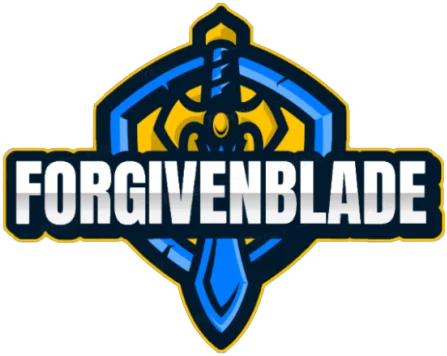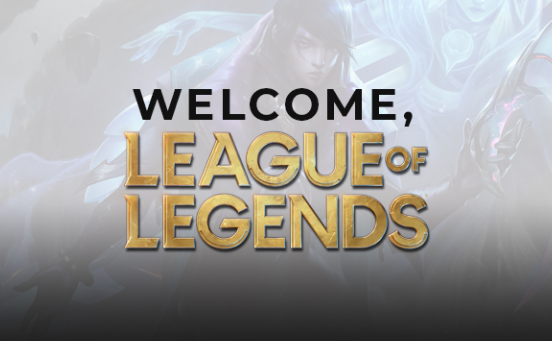
Blog
League of Legends Beginner To Pro Guide
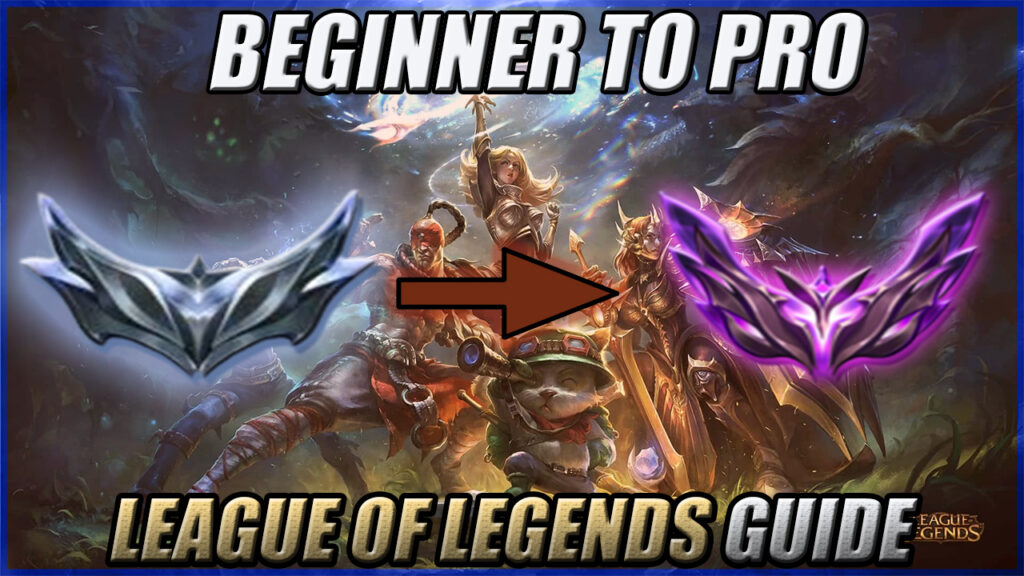
Welcome to this League of Legends Beginner To Pro Guide! League of Legends is a place where strategy meets skill, teamwork reigns supreme, and epic clashes decide the fate of entire civilizations. If you’re a beginner in League of Legends, this guide is just for you!
From the humble beginnings in LoL, to the nature of competitive play. This guide aims to transform you from a beginner League of Legends player into an experienced one. Get ready to learn the champions, unravel the complexities of itemization, delve into the nuances of map control, and embrace the essence of teamwork that defines this iconic multiplayer online battle arena (MOBA) game.
Table Of Contents
Section 1: Introduction to League of Legends
1.1 Overview of the Game
1.2 Understanding Lanes and Roles
1.3 Champion Diversity #1
1. Top lane
Tanks
Fighters/Bruisers
Mages
Split-pushers
- Lane Dynamics
- Objective Influence
- Teleport plays
- Matchup Dynamics
- Splitting vs Grouping
- Adaptation
1.4 Champion Diversity #2
1. Mid lane
Mages
Assassins
Utility Champions
Roaming Champions
2. Importance of Map Control
3. Wave Management
4. Roaming and Mobility
5. Vision Control
6. Balancing Farm and Roaming
7. Teamfight Impact
8. Adaptability and Itemization
1.5 Champion Diversity #3
1. Bottom Lane
– ADC (Attack Damage Carry)
Farming priority
Positioning ADC
Scaling
– Support
Utility and Crowd Control
Warding and Vision Control
Roaming and Initiating
– Lane Dynamics
– Objective Control
– Item Synergy and Powerspikes
– Adaptability in Lane
– Late Game Impact
1.6 Champion Diversity #4
1. Jungle
– Ganking
– Farm Focused Junglers
– Objective Control Champions
– Pathing and Clearing
– Ganking and Counter Ganking
– Vision Control
– Objective Priority
– Adaptability and Decision Making
– Teamfight Impact
1.7 Importance of Teamwork and Communication
Section 2: Understanding Champions
– Overview of different champion classes
– Explanation of champion abilities and roles
– Tips for selecting champions
2.1 Top Lane Champions
2.2 Mid Lane Champions
2.3 Bot Lane Champions
2.4 Jungle Champions
Section 3: Basics of Itemization
– Introduction to core items
– Explanation of item types
– How to adapt items builds based on the game situation
3.1 Starting Items
3.2 Core Items
3.3 Item Types
3.4 Adaptation and Situational Items
Section 4: Mastering Builds
– Beginner Friendly Builds for different roles
– Advanced Builds for experienced players
– Examples of popular champions builds by pro players
4.1 Beginner Friendly builds
4.2 Advanced Builds
4.3 Pro Player Builds and Adaptations
4.4 Importance of Flexibility and Learning
Section 5: Laning and Map Control
– Laning phase strategies for each role
– Rotations and map control tips
– Objectives prioritization
5.1 Laning Phase Strategies for Each Role
5.2 Rotations and Map Control Tips
5.3 Objectives Prioritization
5.4 Strategies: Split pushing vs Teamfighting
5.5 Communication and Shotcalling
Section 6: Teamfighting and Strategy
– Teamfight positioning and role-specific responsibilities
– Shotcalling and communication during team engagements
– Split pushing vs. team fighting strategies
6.1 Teamfight Positioning and Responsibilities
6.2 Initiating and Engaging
6.3 Objective-Oriented Teamfights
6.4 Split pushing vs Grouping Strategies
6.5 Shotcalling and Communication
6.6 Adapting Mid-Game and Late-Game Strategies
Section 7: Improving Gameplay
– Reviewing replays for self-improvement
– Understanding macro and micro gameplay
– Importance of practice, patience, and continuous learning
7.1 Reviewing Replays for Self-Improvement
7.2 Understanding Macro and Micro Gameplay
7.3 Importance of Practice and Patience
7.4 Seeking Guidance and Mentorship
7.5 Embracing Continuous Learning
7.6 Mental Attitude and Mindset
Section 8: Resources for Further Improvement
– Links to reputable websites, guides, and pro player streams
– Community forums and places for discussing strategies
– Additional tips and tricks for enhancing gameplay
8.1 Developing a Healthy Mindset
8.2 Managing Tilt and Frustration
8.3 Goal Setting and Focus
8.4 Continuous Learning and Adaptation
8.5 Mental Preparation for Performance
8.6 Seeking Support and Building a Community
Conclusion
- Diverse Roles and Strategies
- Itemization and Adaptability
- Laning, Objectives, and Map Control
- Teamfighting and Strategy
- Continuous Learning and Mental Attitude
- Mentality and Mental Preparation
- Community and Support

Section 1: Introduction to League of Legends
– Brief overview of the game: objectives, champions, lanes, etc
– Explanation of roles (top, jungle, mid, ADC, support)
– Importance of teamwork and communication
1.1 Overview of the game
League of Legends (LoL) is a multiplayer online battle arena (MOBA) where two teams, each consisting of five players, compete to destroy the opposing team’s Nexus, located in their base. The game is played on the Summoner’s Rift map and involves strategic gameplay, teamwork, and individual skill.
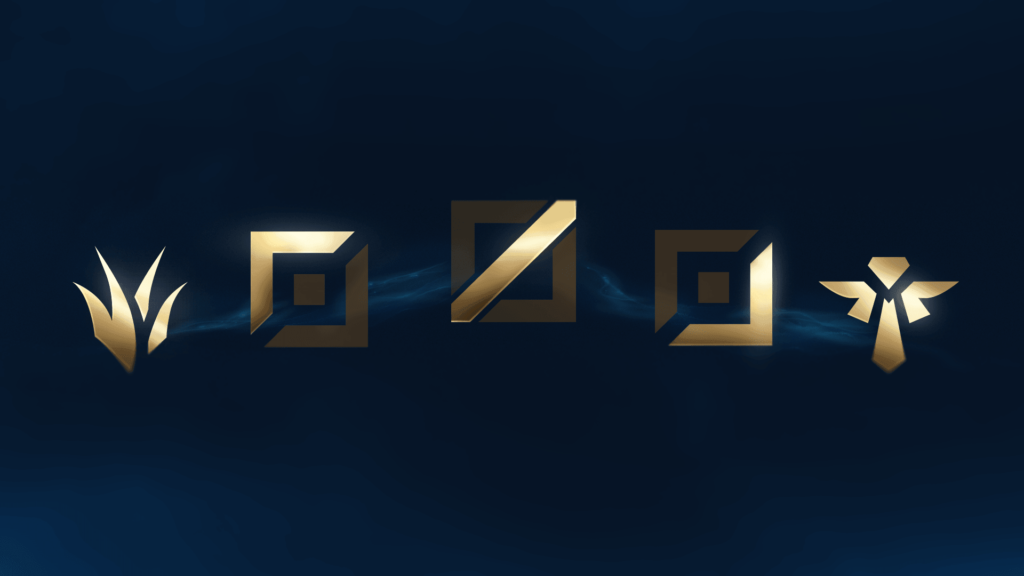
1.2 Understanding Lanes and Roles
LoL features three lanes: top, mid, and bottom, each with a specific purpose and strategic importance. Additionally, the jungle area between these lanes is inhabited by neutral monsters and is crucial for a team’s success.
Top Lane: Often occupied by champions with durability or split-pushing capabilities. This lane typically involves a 1v1 matchup.
1.3 Champion Diversity #1
Top lane champions often vary widely in their playstyles and roles within a team. They can be categorized into:
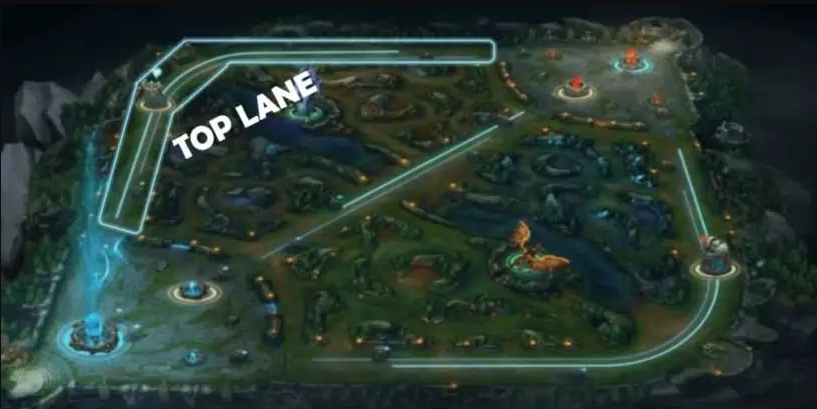
Tanks: Champions with high durability and crowd control abilities, ideal for initiating team fights or soaking up damage.

Fighters/Bruisers: Versatile champions with a mix of damage and durability, capable of engaging, trading blows, and sustaining in extended fights.

Mages: Some AP-based champions, usually those with sustain or ranged abilities, can thrive in the top lane by poking enemies or controlling the lane with their abilities.

Split-pushers: Champions designed to excel in pushing lanes and applying pressure to multiple points on the map, creating strategic advantages for their team.
– Lane Dynamics
Top lane is often considered an island due to its isolated nature from early game objectives like Dragon. It’s a longer lane, making it prone to ganks from the enemy jungler. Top laners need to balance farming, trading with their opponent, and warding to avoid being vulnerable to ganks.
– Objective Influence:
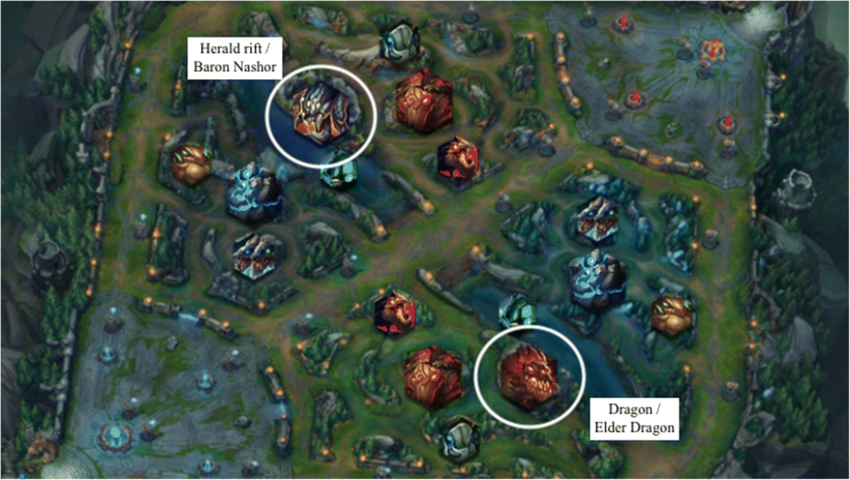
While top laners might feel isolated early on, their impact in mid to late game team fights and objective control is significant. A well-farmed and strategically played top laner can become a powerful force in securing objectives like Baron Nashor and towers.
– Teleport Plays:

Teleport summoner spell is commonly used by top laners to make cross-map plays, aiding their team during skirmishes, ganks, or securing objectives. Mastering teleport usage and timing can greatly influence the outcome of fights and objectives.
– Matchup Dynamics:
Top lane matchups are diverse and dynamic. Understanding matchups, power spikes, and itemization against specific champions is crucial for success. It involves managing wave manipulation, trading efficiently, and knowing when to play aggressively or passively based on matchups.
– Splitting vs Grouping:
Top laners often face the decision between split-pushing to draw enemies away from objectives or grouping with their team for team fights. This decision heavily relies on the champion’s strengths, team composition, and the state of the game.
– Adaptation:
Top lane requires adaptability. Whether it’s adjusting playstyle based on the team’s needs, building defensively or offensively depending on the game flow, or adjusting strategies based on the enemy team’s composition, being flexible is key to success.
Mastering the top lane involves a combination of mechanical skill, game knowledge, and strategic decision-making. It’s a challenging yet rewarding role that can heavily influence the outcome of matches.
1.4 Champion Diversity #2
1. Mid lane, home to champions with burst damage or strong roaming potential. Mid laners play a pivotal role in controlling the map and securing objectives.

Champion Diversity:
Mid lane hosts a wide variety of champions, including mages, assassins, and occasionally bruisers or marksmen with strong burst or control abilities. These champions are typically focused on dealing damage or controlling the battlefield.
– Mages: AP-based champions with strong abilities that excel in dealing magic damage and controlling team fights. They often have burst damage or AoE spells.

– Assassins: High-mobility champions that specialize in quickly eliminating priority targets. They thrive on picking off enemies and disrupting the enemy backline.

– Utility Champions: Some mid laners bring utility through crowd control, shields, or buffs to support their team.

– Roaming Champions: Certain mid laners possess exceptional roaming potential, allowing them to influence other lanes or assist the jungler in securing objectives.
– Importance of Map Control:
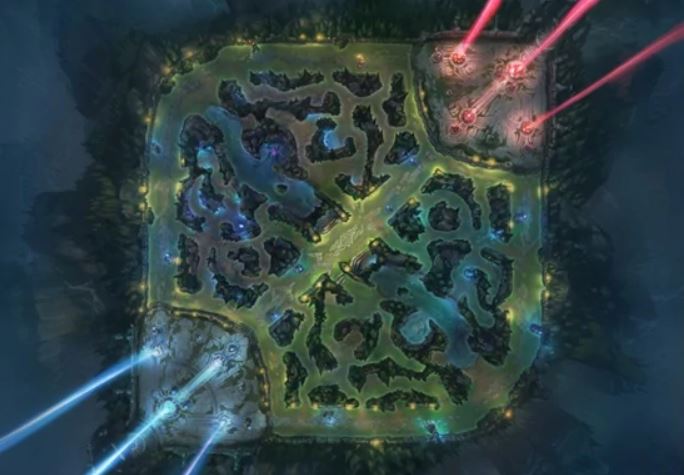
The mid lane’s central position on the map enables mid laners to have a significant impact on both sides of the Summoner’s Rift. Successful mid laners prioritize controlling the lane, pushing waves, and looking for opportunities to roam to side lanes or assist the jungler in invading or securing objectives like the Dragon.
– Wave Management:
Understanding how to manage minion waves is crucial for mid laners. Proper wave manipulation allows them to create pressure, deny CS (creep score), and create opportunities to roam or assist in jungle skirmishes.
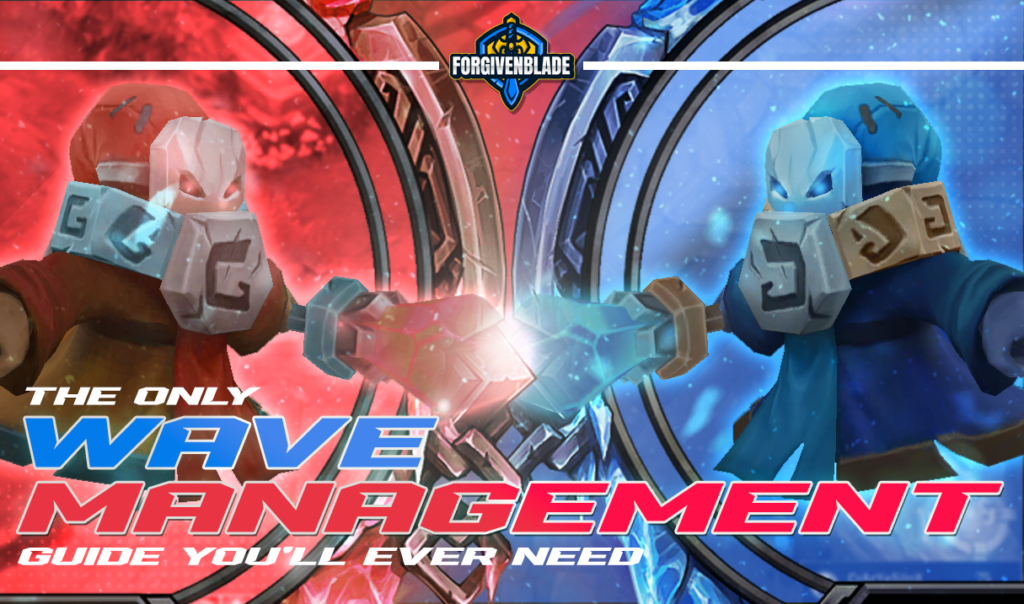
– Roaming and Mobility:
Mid laners often have access to Teleport or Ignite summoner spells, but some may opt for spells like Flash or Barrier based on their champion and matchup. Roaming effectively can lead to snowballing advantages for not only the mid laner but also their teammates.
– Vision Control:
Mid laners play a vital role in controlling vision around the river and jungle entrances. Placing wards or denying enemy vision can prevent ganks and set up plays for the team.
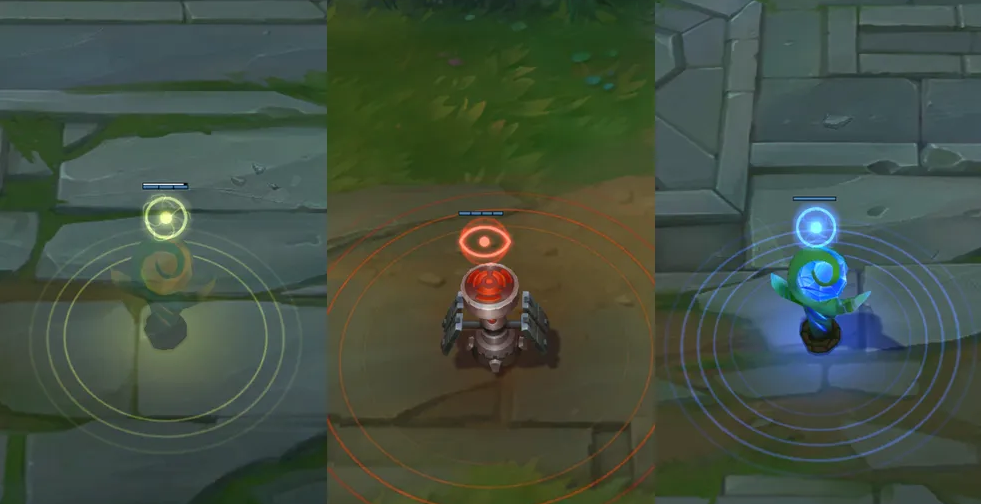
– Balancing Farm and Roaming:
Mid laners must strike a balance between farming efficiently and looking for opportunities to impact other lanes. Knowing when to push the wave and roam or when to stay and secure CS is key to success.
– Teamfight Impact:
Mid laners are often key damage dealers in team fights. Positioning, timing of abilities, and target selection are crucial for maximizing their impact and securing victories in team engagements.
– Adaptability and Itemization:
Mid laners need to adapt their build and playstyle based on the matchup, team compositions, and game flow. Proper itemization can significantly enhance a mid laner’s effectiveness.
The mid lane demands versatility, strong map awareness, and the ability to exert influence across the map. Excelling in this role requires a combination of mechanical prowess, game knowledge, and strategic decision-making.
1.5 Champion Diversity #3
– Bottom Lane: Consists of two champions—an Attack Damage Carry (ADC) and a Support. The ADC deals sustained damage while the Support assists and protects them.
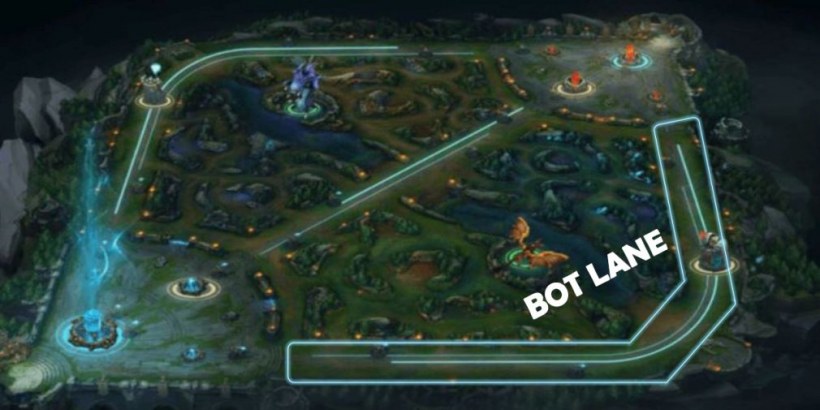
– ADC (Attack Damage Carry):
The ADC’s primary role is dealing sustained physical damage throughout the game. They are typically ranged champions who rely heavily on basic attacks and scale with items to become powerful late-game threats.

Farming Priority: ADCs focus on last-hitting minions to accumulate gold and scale into the late game. They require significant farm and items to become effective.
Positioning: ADCs need to position themselves safely in team fights, dealing damage while staying protected by teammates and positioning themselves to avoid enemy threats.
Scaling: ADCs tend to start relatively weak but become increasingly powerful as they acquire items. They are the primary source of consistent damage in team fights.
– Support:
Support champions in the bot lane play a crucial role in protecting and enabling the ADC while providing utility, crowd control, and vision control for the team.

– Utility and Crowd Control:
Supports bring a variety of abilities aimed at assisting the ADC and controlling the enemy team. This can include heals, shields, crowd control, or buffs.
– Warding and Vision Control:
Supports are responsible for placing and maintaining vision around the bot lane, ensuring awareness of potential threats like enemy ganks or objective control.
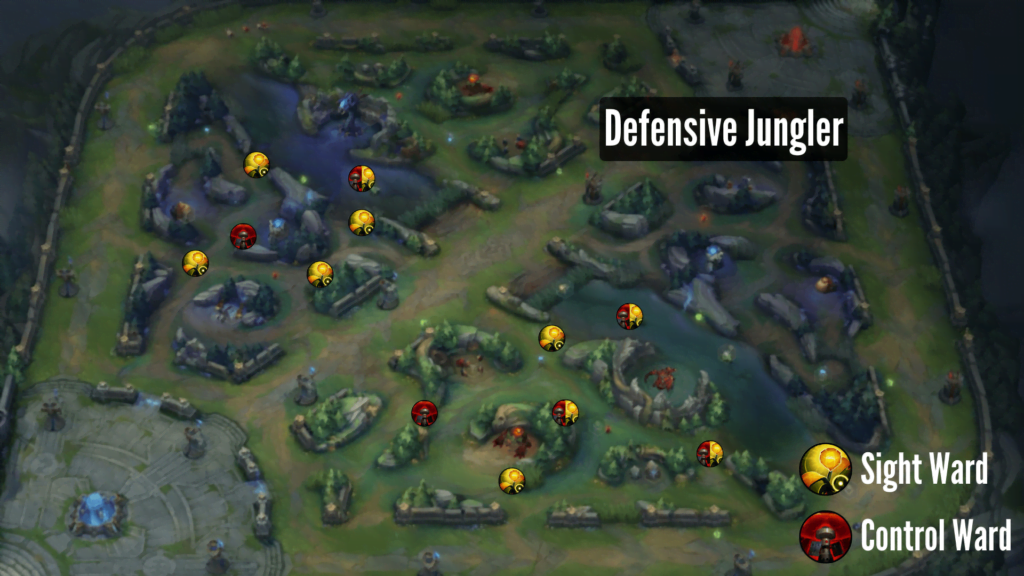
– Roaming and Initiating:
Experienced supports often roam to assist other lanes or set up plays across the map. They may also be responsible for initiating fights or making crucial engages.
– Lane Dynamics:
Bot lane dynamics involve a delicate balance between aggression and farming. ADCs aim to farm safely and scale while supports control the lane, enabling their ADC to farm and trade efficiently.
– Poke vs. All-in:
Different bot lane duos may focus on poking enemies down gradually or going for all-in engagements to secure kills.
– Wave Management:
Controlling minion waves is essential for bot laners. It affects vision, trading, and the potential for ganks.
– Objective Control:
Due to the bot lane’s proximity to the Dragon pit, bot laners often play a pivotal role in securing this crucial objective. This lane’s control can heavily influence the team’s ability to secure Dragons, which provide powerful buffs.
– Item Synergy and Powerspikes:
ADCs’ itemization and powerspikes significantly impact their strength in the game. Supports often build items that synergize with their ADC, enhancing their effectiveness in fights.
– Adaptability in Lane:
Bot laners need to adapt to various matchups, as the lane can feature a diverse range of enemy champions and playstyles. Understanding when to play aggressively, passively, or freeze the wave is essential.
– Late Game Impact:
ADCs are critical late-game carries, dealing massive damage in team fights. Successful bot lanes can heavily influence the late-game outcome, securing objectives and winning team fights.
Bot lane synergy between ADCs and supports is crucial for success. Communication, coordination, and understanding each other’s strengths and weaknesses are key elements in dominating the bot lane and transitioning to a powerful late-game force.
1.6 Champion Diversity #4
– Jungle:
The jungler navigates the areas between lanes, killing neutral monsters for experience and gold, while also supporting teammates and influencing the map through ganks and objective control.

– Role and Responsibilities:
Junglers operate in the area between lanes, where neutral monsters reside. Their primary responsibilities include:

– Monster Camp Clearing:
Junglers farm neutral monster camps to gain experience and gold, leveling up and acquiring items to become impactful throughout the game.
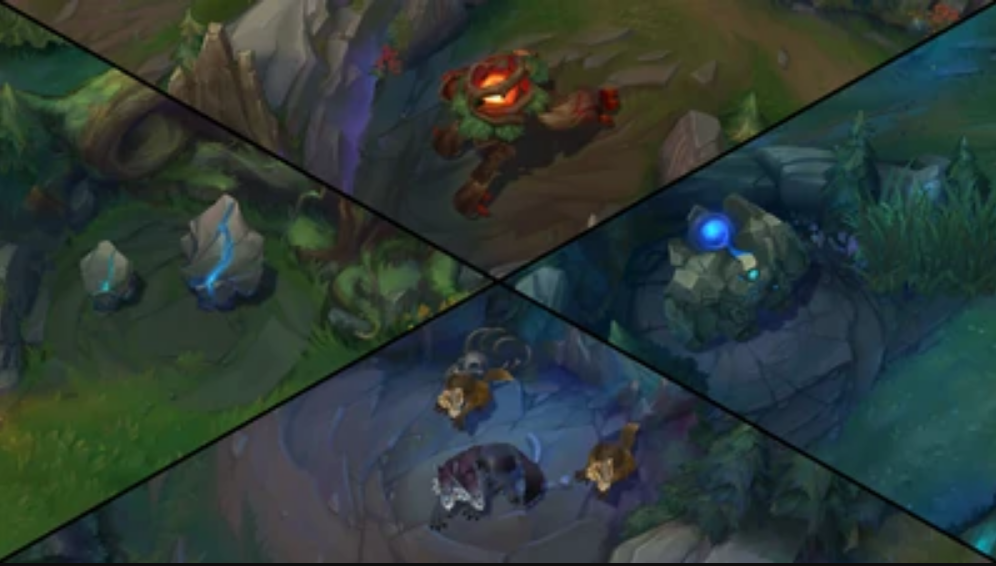
– Ganking and Lane Pressure:
Junglers create pressure by ganking lanes, applying pressure to opponents, and securing kills or burning enemy summoner spells.
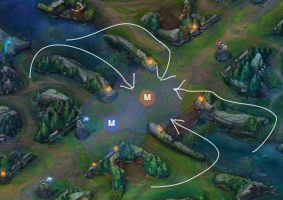
– Objective Control:
Securing key map objectives such as Dragons, Rift Herald, and Baron Nashor is a crucial part of a jungler’s role, as these objectives provide powerful advantages for the team.
Junglers come in various forms, including tanks, assassins, bruisers, mages, and utility-focused champions. Each has a unique playstyle and strengths:
– Ganking Champions:
Some junglers excel at early ganking with high mobility or crowd control abilities.
– Farm-Focused Junglers:
Others prioritize farming the jungle to scale into powerful late-game threats.
– Objective Control Champions:
Certain junglers specialize in securing neutral objectives quickly and efficiently.
– Pathing and Clearing:
Efficient jungle pathing involves optimizing routes to clear camps, maintain experience and gold income, and be available for ganks or counterganks when needed. Proper pathing also includes tracking the enemy jungler to anticipate their movements.

– Ganking and Counter-Ganking:
Successful ganks involve coordination with laners, identifying opportune moments, and capitalizing on enemy mistakes or overextension. Counter-ganking, or being in the right place at the right time to turn around enemy ganks, is also crucial.
– Vision Control:
Junglers play a significant role in maintaining vision control. Placing wards in key locations, denying enemy vision, and using Sweeping Lenses or Control Wards are essential for map control and preventing enemy ganks.
– Objective Priority:
Understanding the importance of different objectives at various stages of the game is critical. Junglers must prioritize which objectives to contest, secure, or trade based on their team composition, the state of the game, and potential risks.
– Adaptability and Decision-Making:
Junglers need to adapt their playstyle based on the state of the game. Whether it’s focusing on snowballing lanes, peeling for their carries in team fights, or controlling the map through vision and objective control, quick and effective decision-making is crucial.
– Teamfight Impact:
In team fights, junglers fulfill roles depending on their champion’s strengths—initiating fights, peeling for their team’s carries, disrupting the enemy backline, or focusing on high-value targets.
Mastering the jungle role requires a combination of map awareness, strategic thinking, adaptability, and strong decision-making. Effective junglers are not only proficient in their champion’s mechanics but also possess a deep understanding of the game’s macro elements and map control.
Section 2: Understanding Champions
– Overview of different champion classes (mage, assassin, tank, etc.)
– Explanation of champion abilities and roles in team compositions
– Tips for selecting champions based on playstyle and team needs
2.1 Top Lane Champions
Tanks:
Champions like Malphite, Maokai, or Ornn excel in soaking up damage and initiating team fights. They provide crowd control and durability for the team.
Fighters/Bruisers: Darius, Renekton, or Fiora are bruisers with a mix of damage and durability. They thrive in extended fights, dealing significant damage while being able to sustain themselves.
Mages: Some mages can successfully take the top lane, such as Vladimir, Ryze, or Swain. These champions often have sustain or ranged abilities, allowing them to control the lane or sustain themselves.
Split-pushers: Champions like Tryndamere, Jax, or Fiora specialize in split-pushing. They aim to draw enemies to the top lane while pressuring other objectives across the map.
2.2 Mid Lane Champions
Mages: Ahri, Syndra, Orianna, and Vel’Koz are examples of burst damage mages who control the mid lane by poking enemies and bursting them down in team fights.
Assassins: Zed, Fizz, Katarina, and Talon are high-mobility champions capable of quickly eliminating priority targets with their burst damage, making them powerful roamers.
Utility Champions: Some mid laners like Lulu, Karma, or Seraphine bring utility to the team through shields, heals, or crowd control, supporting their team during skirmishes and fights.
Roaming Champions: Twisted Fate, Taliyah, or Aurelion Sol have excellent roaming potential, enabling them to impact other lanes and assist in securing objectives.
2.3 Bot Lane Champions
ADCs: Champions like Jinx, Kai’Sa, Ezreal, and Ashe scale heavily with items, dealing consistent physical damage in team fights, and relying on their team to protect them.
Supports: Enchanters like Janna, Lulu, or Nami provide buffs, heals, and shields to their ADCs. Tanks such as Leona, Alistar, or Nautilus excel at engaging fights and providing crowd control.
2.4 Jungle Champions
Ganking Champions: Lee Sin, Elise, and Jarvan IV are known for their early ganking potential and crowd control, aiming to set up kills for their team.
Farming Junglers: Champions like Master Yi, Shyvana, or Karthus focus on clearing the jungle quickly to scale into powerful late-game threats.
Objective Control Champions: Nunu & Willump, Shyvana, or Udyr excel at securing neutral objectives due to their fast clear speed and objective control abilities.
Understanding the strengths, weaknesses, and playstyles of various champions within each role is crucial for drafting, counter-picking, and overall team strategy in League of Legends. Players often find success by mastering a few champions in their preferred roles while understanding the broader dynamics of different champion types.
Section 3: Basics of Itemization
– Introduction to core items (Doran’s items, boots, etc.)
– Explanation of item types (offensive, defensive, utility)
– How to adapt item builds based on the game situation
3.1 Starting Items
Doran’s Items: These provide early-game stats and sustain. D Blade is often used by ADCs for extra damage and health, while Doran’s Ring suits AP champions for mana sustain and extra damage. Doran’s Shield is preferred by champions seeking early survivability and health regeneration.
Boots: Basic boots offer movement speed, enabling quicker rotations across the map or dodging skill shots. Starting with boots allows for faster mobility, although sacrificing other early-game stats.
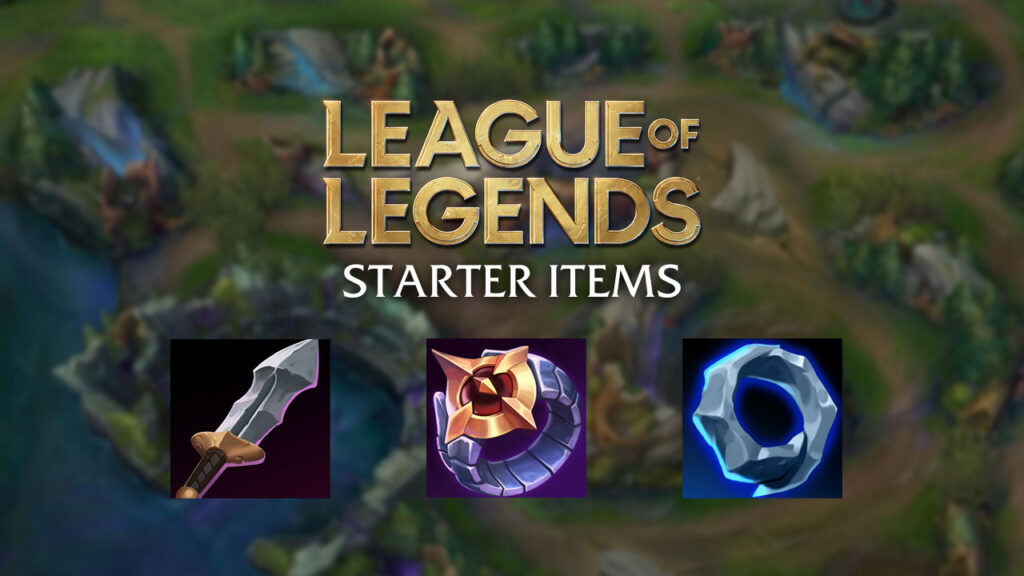
3.2 Core Items
Offensive Items: These items offer increased damage output and are tailored to different champion types. For example, Infinity Edge for ADCs, Luden’s Echo for mages, or Trinity Force for bruisers/fighters.
Defensive Items: Defensive items provide survivability against specific threats. Guardian Angel, Zhonya’s Hourglass, or Banshee’s Veil are examples, offering protection against burst damage, crowd control, or magic damage, respectively.
Utility Items: These items enhance a champion’s utility. Supports might opt for items like Redemption or Mikael’s Crucible for healing or crowd control removal, while tanks could choose items like Gargoyle Stoneplate for teamfight durability.

3.3 Item Types
Lifesteal/Spellvamp: These items provide sustain by healing champions based on their auto-attacks (lifesteal) or ability damage (spellvamp). Blade of the Ruined King and Hextech Gunblade are examples.
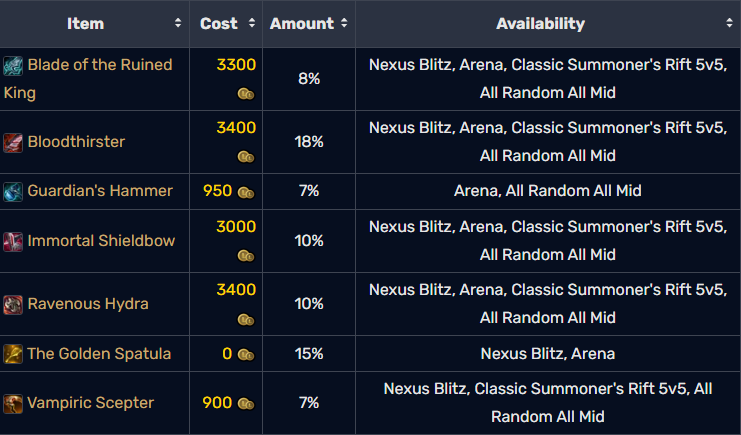
Armor Penetration/Magic Penetration: These items reduce the enemy’s armor or magic resist, respectively, allowing champions to deal more damage. Examples include Last Whisper for physical damage or Void Staff for magic damage.


Cooldown Reduction (CDR): Items like Black Cleaver or Ionian Boots of Lucidity grant CDR, reducing the cooldowns of abilities, allowing champions to cast spells more frequently.
3.4 Adaptation and Situational Items
Situational Items: Players adapt their builds based on the game’s dynamics. Building resistances against the enemy team’s composition (Armor against AD-heavy teams, Magic Resist against AP-heavy teams) or countering specific enemy champions (such as building Grievous Wounds against heal-heavy enemies) is crucial.
Counter-Building: Players adjust their itemization to counter the opponents’ builds or playstyles. This might involve building anti-healing against sustain-heavy champions or purchasing items that counter specific mechanics like crowd control (e.g., Quicksilver Sash or its upgrade, Mercurial Scimitar).
Understanding itemization allows players to adapt their builds to the flow of the game, counter their opponents, and optimize their champion’s strengths while mitigating weaknesses. It’s a vital aspect of strategy in League of Legends that evolves as the game progresses.
Section 4: Mastering Builds
– Beginner-friendly builds for different roles (suggested items, starting items)
– Advanced builds for experienced players (situational items, counter-building)
– Examples of popular champion builds used by pro players
4.1 Beginner-Friendly Builds
For novice players, starting with simple and effective item builds can provide a solid foundation for their chosen role:
– ADC Build: Starting with a standard ADC build consisting of items like Kraken Slayer (for increased damage), Berserker’s Greaves (for attack speed), and Infinity Edge (for critical strike damage) can offer a straightforward yet effective setup for auto-attack focused champions.
– Mage Build: Mages can begin with core items like Luden’s Tempest (providing ability haste and burst damage), Sorcerer’s Shoes (for magic penetration), and Rabadon’s Deathcap (for increased ability power), focusing on increasing their spell damage output.
– Tank Build: Tanks might opt for items like Sunfire Aegis (providing health and tankiness), Plated Steelcaps or Mercury’s Treads (offering resistance against physical or magic damage, respectively), and Thornmail (to mitigate enemy healing) to enhance survivability in fights.
4.2 Advanced Builds
For more experienced players, adapting builds based on game flow, matchups, and team compositions becomes crucial:
– Situational Items: Understanding when to incorporate situational items is key. Building Grievous Wounds against heal-heavy teams, purchasing Guardian Angel for extra survivability in team fights, or adapting penetration items based on enemy resistances are advanced strategies.
– Counter-Building: Recognizing enemy threats and counter-building becomes more prevalent at higher levels of play. For instance, investing in items like Quicksilver Sash or Banshee’s Veil against heavy crowd control or magic damage compositions respectively, or buying Executioner’s Calling against sustain-heavy champions.
4.3 Pro Player Builds and Adaptations
– Studying Pro Builds: Observing item builds used by professional players can offer valuable insights. Analyzing their choices in different matchups, team compositions, and game phases can help in understanding the rationale behind specific builds and adaptations.
– Flexibility and Adaptation: Professional players often showcase adaptability in their builds. They might deviate from standard builds to adjust to unique game situations, emphasizing the importance of adaptability and flexibility in itemization.
4.4 Importance of Flexibility and Learning
– Experimentation and Learning: Encouraging players to experiment with different item combinations, adapt their builds to various scenarios, and learn from both successes and failures is crucial for growth and improvement.
– Continuous Learning: Emphasizing that itemization is a continuous learning process, influenced by meta shifts, patch updates, and personal playstyle, encourages players to stay updated and adapt their builds accordingly.
Mastering item builds involves a combination of understanding core itemization principles, adapting to varying situations, and continually learning from experience and higher-level gameplay. This section aims to guide players from basic builds to more nuanced and adaptable itemization strategies.
Section 5: Laning and Map Control
– Laning phase strategies for each role (CSing, trading, warding)
– Rotations and map control tips
– Objectives prioritization (towers, dragons, baron, etc.)
5.1 Laning Phase Strategies for Each Role
– Top Lane: Top laners focus on managing the minion wave, trading efficiently, and balancing aggression with caution. They must ward effectively to avoid ganks due to the lane’s isolation.
– Mid Lane: Mid laners need to control the wave, apply pressure on the enemy mid laner, and look for opportunities to roam or assist in jungle skirmishes. Vision around river entrances is crucial to avoid ganks.
– Bot Lane (ADC/Support): ADCs prioritize farming and scaling, while supports control the lane, set up vision, and look for opportunities to engage or protect their ADC.
– Jungle: Junglers need to balance farming, ganking, and objective control. Effective pathing and tracking the enemy jungler’s movements are crucial for successful ganks and counterganks.
5.2 Rotations and Map Control Tips
– Objective Prioritization: Understanding the importance of objectives such as Dragon, Rift Herald, and Baron is crucial. Communicating with the team to secure these objectives or contest enemy attempts is key.
– Wave Management: Manipulating minion waves to create pressure, deny CS, or set up dives or roams is essential for controlling the map and creating advantageous situations.
– Vision Control: Placing wards in strategic locations, utilizing Control Wards, and denying enemy vision around key objectives like Dragon or Baron can prevent surprise attacks and secure objectives.
5.3 Objectives Prioritization
– Towers: Taking down outer and inner turrets opens up the map, allowing for deeper vision and control over objectives. Protecting your own turrets is equally crucial to prevent map pressure.
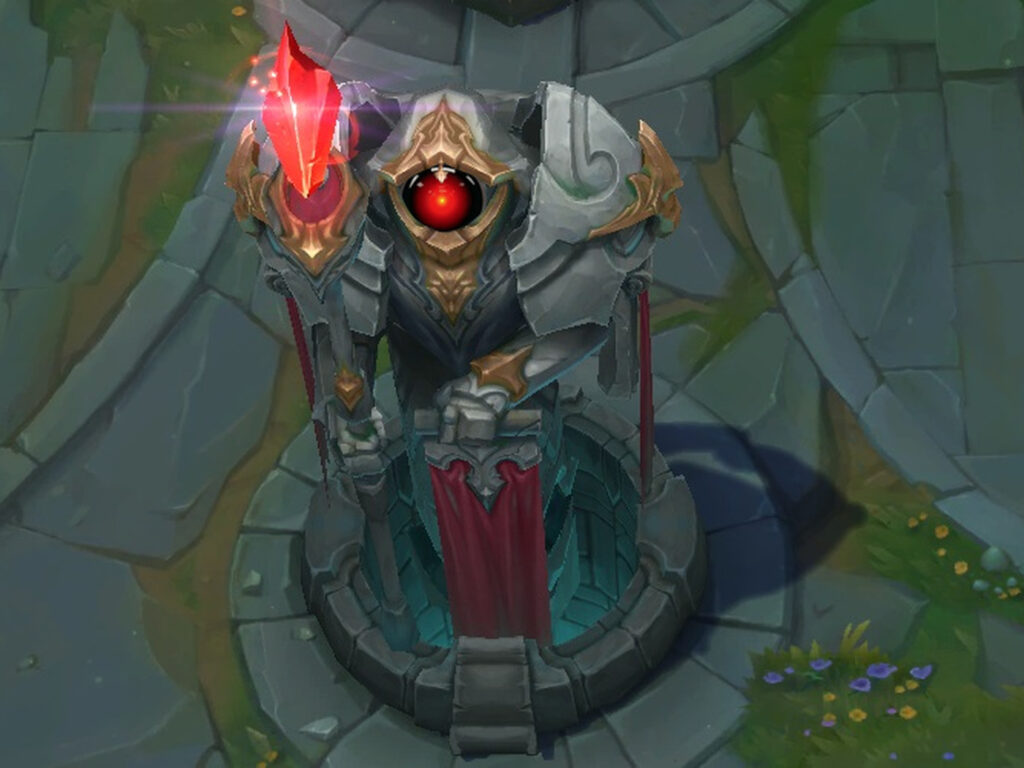
– Dragon: Dragons provide significant buffs to the team, making controlling and securing these objectives vital. Understanding elemental drakes and their effects is essential for strategic decisions.

– Baron Nashor: Baron buff empowers minions and champions, aiding in pushing lanes and securing victory. It’s a game-changing objective that requires proper setup and control.
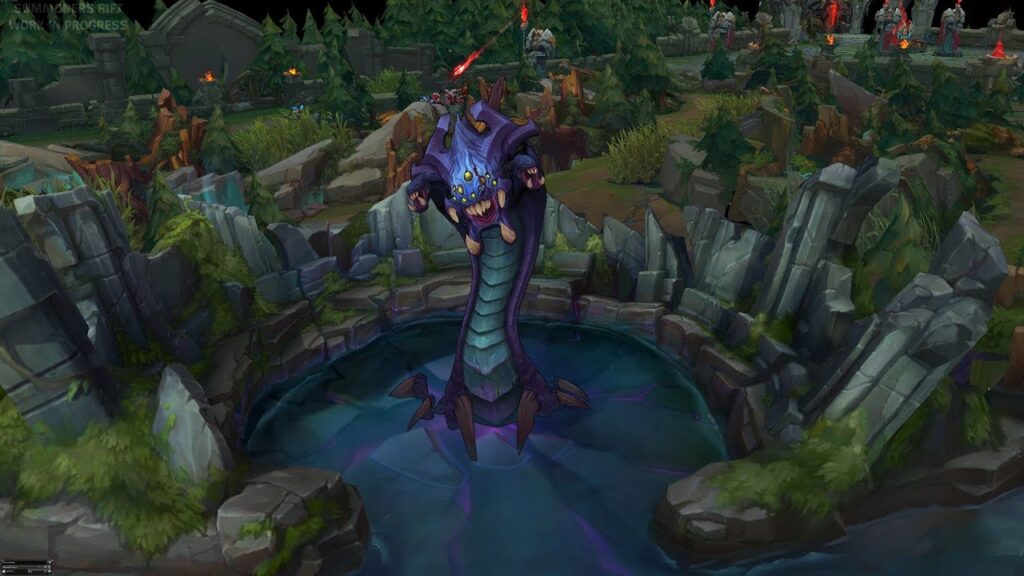
5.4 Strategies: Split-pushing vs. Teamfighting
– Split-pushing: Utilizing champions with strong split-push capabilities can create map pressure, forcing enemies to respond and potentially creating advantages elsewhere on the map.
– Teamfighting: Understanding team compositions and power spikes to engage in favorable team fights can secure objectives, create advantages, and push towards victory.
5.5 Communication and Shotcalling

– Effective Communication: Constantly communicating information about enemy positions, cooldowns, and intentions is crucial for coordinated movements and engages.
– Shotcalling: Designating a shotcaller or being one yourself can help guide the team in making strategic decisions regarding objectives, rotations, and teamfights.
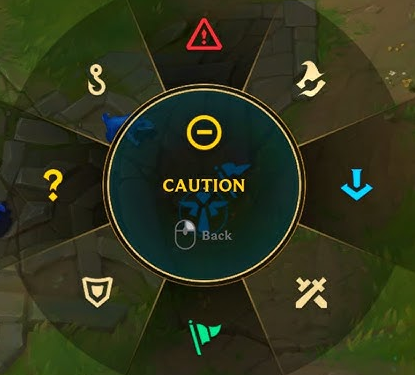
Understanding the nuances of laning, map control, and objective prioritization allows players to make informed decisions throughout the game. Mastering these aspects contributes significantly to a team’s success and leads to more strategic and coordinated gameplay.
Section 6: Teamfighting and Strategy
– Teamfight positioning and role-specific responsibilities
– Shotcalling and communication during team engagements
– Split-pushing vs. teamfighting strategies
6.1 Teamfight Positioning and Responsibilities
– Frontline: Tanks and bruisers usually occupy the frontline, soaking up damage, and initiating fights. They aim to disrupt the enemy team and protect their carries.
– Backline: ADCs and mages position themselves behind the frontline, dealing damage from a safe distance. Their primary focus is dealing consistent damage while staying protected.
– Supporting Roles: Supports play a crucial role in team fights, providing crowd control, peeling for their carries, and using their abilities to disrupt or protect as needed.
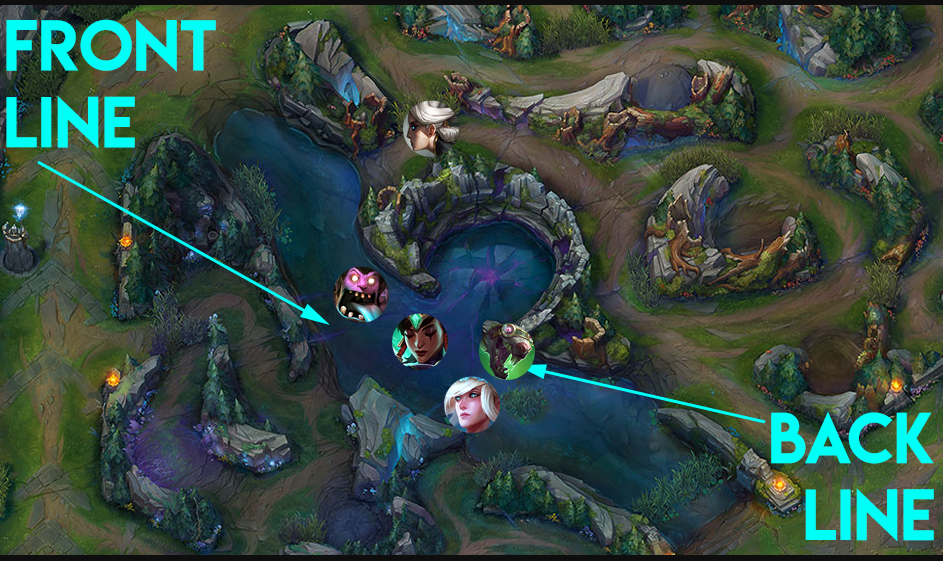
6.2 Initiating and Engaging
– Engage Tools: Champions with engage abilities, such as stuns, hooks, or dashes, initiate fights. Timing engages properly and catching opponents off-guard can create advantageous teamfight situations.
– Follow-up and Coordination: Teammates must follow up on engages, coordinating abilities to maximize their impact. Combining ultimates and chaining crowd control is key to securing kills or winning fights.
6.3 Objective-Oriented Teamfights
– Objective Focus: Teamfights often revolve around securing or contesting objectives. Prioritizing targets or zoning enemies away from objectives is crucial in these scenarios.
– Peeling and Protecting: Protecting high-priority targets like the ADC is essential. Peelers use abilities to keep threats away from their carries, ensuring their sustained damage output.
6.4 Split-pushing vs. Grouping Strategies
– Split pushing: During split-push strategies, one or more teammates pressure side lanes while the rest of the team applies pressure in another lane or around an objective. This strategy can force the enemy team into difficult decisions, creating opportunities for picks or objectives.
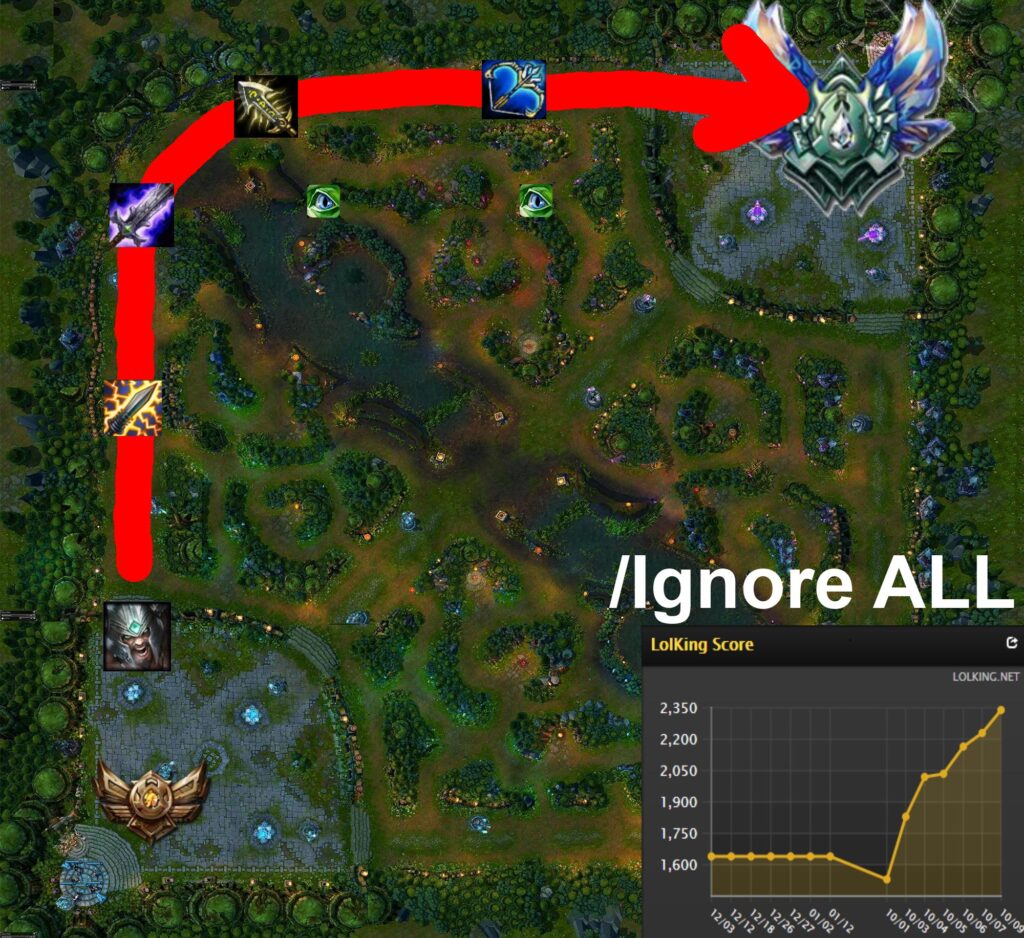
– Grouping: Grouping as five allows for stronger teamfight potential and more secure control over objectives. It’s crucial for coordinated engages and securing important objectives like Baron or Dragon.
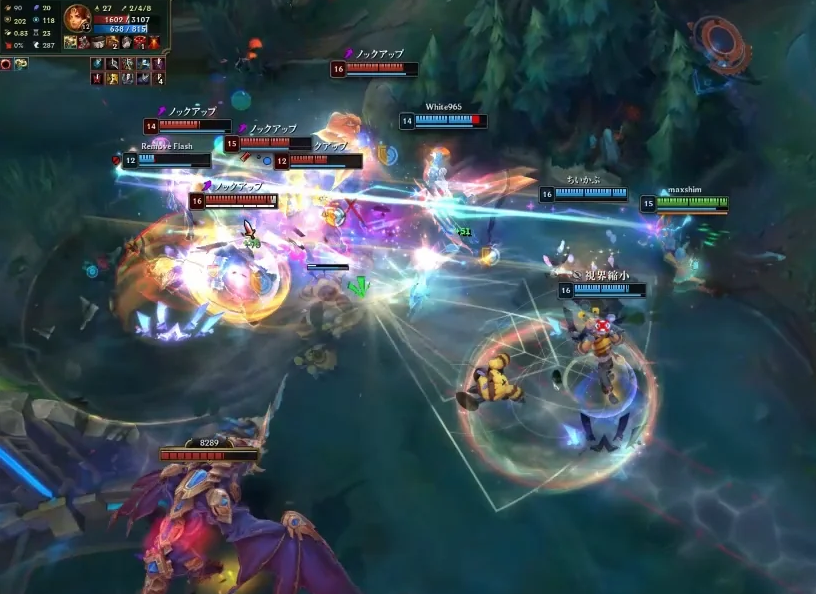
6.5 Shotcalling and Communication
– Shotcalling in Teamfights: Having a shotcaller directing the team during teamfights helps maintain focus and ensures everyone is on the same page. Quick decision-making is crucial in these high-stress situations.
– Clear Communication: Teams must communicate cooldowns, target priorities, and focus to ensure efficient execution of strategies and abilities during teamfights.
6.6 Adapting Mid-Game and Late-Game Strategies
– Mid Game Rotations: Transitioning from laning phase to mid-game involves rotating to secure objectives, setting up vision, and making plays around the map to gain advantages.
– Late Game Objective Control: As the game progresses, focusing on key objectives like Baron Nashor and Elder Dragon becomes critical. Teams must prioritize vision control and plan strategic plays to secure these game-changing buffs.
Mastering teamfighting involves a combination of understanding champion roles, proper positioning, coordination, and effective communication. Developing strategies that capitalize on strengths and adapt to changing game dynamics is crucial for success in League of Legends.
Section 7: Improving Gameplay
– Reviewing replays for self-improvement
– Understanding macro and micro gameplay
– Importance of practice, patience, and continuous learning
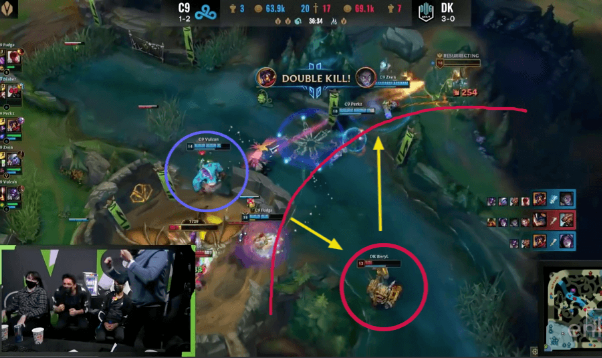
7.1 Reviewing Replays for Self-Improvement
– Replay Analysis: Reviewing your gameplay replays allows for a detailed examination of decisions, mechanics, and mistakes made during matches. It helps identify areas for improvement.
– Identifying Mistakes: Analyzing deaths, missed opportunities, inefficient resource management, or positioning errors provides valuable insights into areas requiring attention and improvement.
7.2 Understanding Macro and Micro Gameplay
– Macro Play: This involves broader strategic decisions, such as objective prioritization, rotations, and map control. Understanding macro play contributes significantly to a team’s success.
– Micro Play: Microscopic gameplay refers to individual mechanics, like last-hitting minions, trading efficiently, ability combos, and positioning in fights. Mastering micro play enhances overall performance.

7.3 Importance of Practice and Patience
– Consistent Practice: Regularly playing and practicing champions, mechanics, and strategies helps in improving overall skill and game understanding.
– Learning from Mistakes: Embracing errors as learning opportunities and not being discouraged by losses is crucial. Every defeat or mistake is a chance to grow and improve.
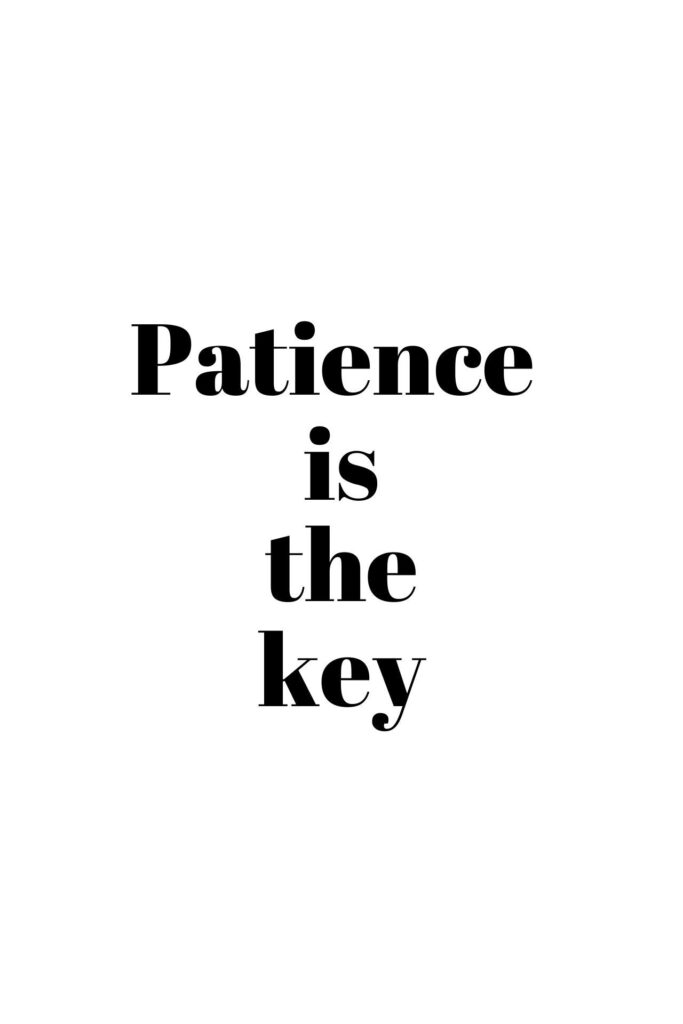
7.4 Seeking Guidance and Mentorship
– Community Engagement: Engaging with the League of Legends community through forums, discussions, or online communities can offer valuable insights, tips, and discussions on strategies and gameplay.
– Finding Mentors: Learning from experienced players or seeking guidance from mentors can accelerate the learning curve. Mentors like our COACHES can provide personalized advice and strategies tailored to individual gameplay.
7.5 Embracing Continuous Learning
– Adapting to Meta Changes: The League of Legends meta constantly evolves due to patches, balance changes, and shifts in strategies. Staying informed and adapting to these changes is essential.
– Experimentation and Innovation: Being open to trying new strategies, builds, or approaches allows for personal growth and might lead to discovering innovative playstyles.
7.6 Mental Attitude and Mindset
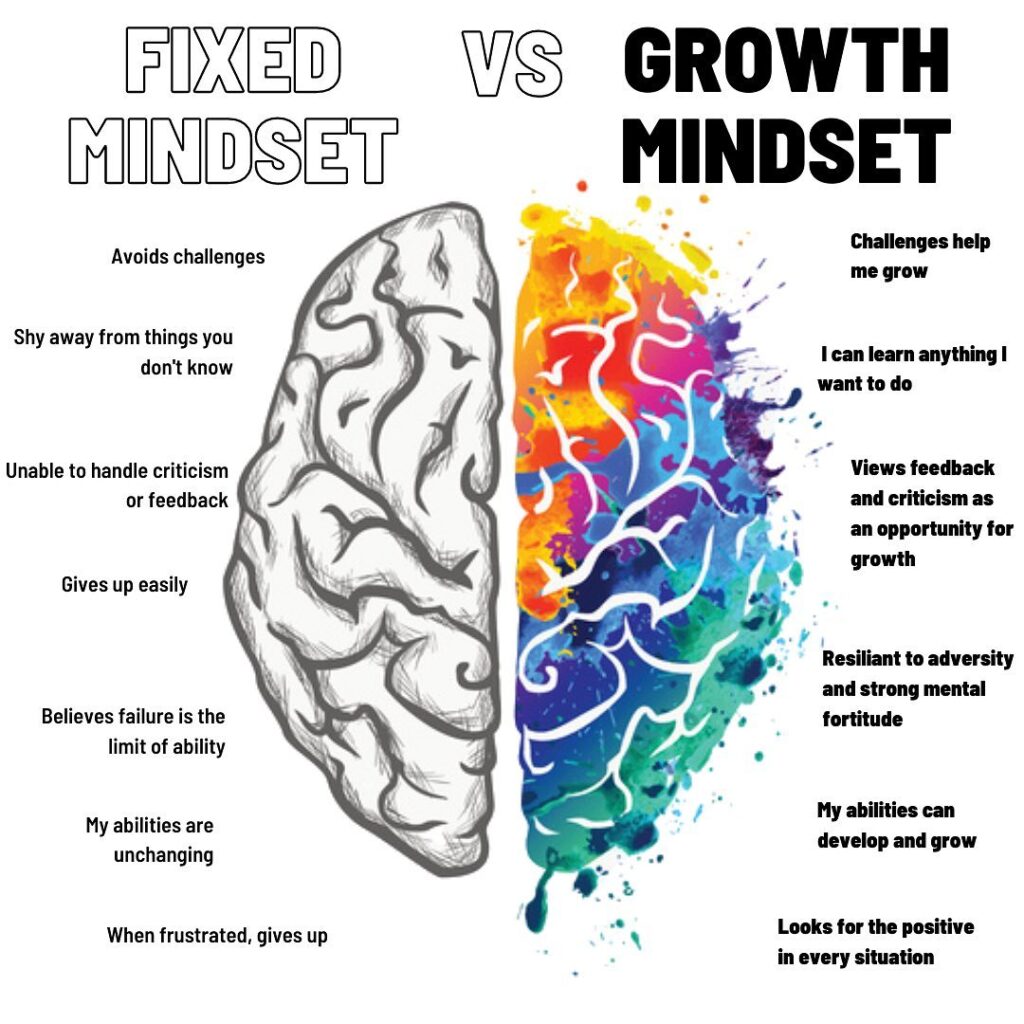
– Positive Mindset: Maintaining a positive attitude, focusing on improvement rather than immediate results, and managing tilt or frustration contributes to a healthier gaming experience and better performance.
– Setting Goals: Establishing achievable short-term and long-term goals, whether it’s mastering a new champion, improving CS, or climbing ranks, provides direction and motivation for improvement.
Improving gameplay in League of Legends is a continuous journey that involves a mix of self-reflection, practice, learning from others, and maintaining a positive attitude. Embracing the learning process and consistently striving for improvement are key factors in becoming a better player.
Section 8: Resources for Further Improvement
– Links to reputable websites, guides, and pro player streams
– Community forums and places for discussing strategies
– Additional tips and tricks for enhancing gameplay
8.1 Developing a Healthy Mindset
– Positive Attitude: Maintaining a positive outlook, focusing on improvement rather than immediate results, and acknowledging mistakes as learning opportunities are key aspects of a healthy mindset.
– Resilience: Building resilience to handle losses, setbacks, and mistakes positively, using them as stepping stones for improvement rather than sources of discouragement.
8.2 Managing Tilt and Frustration
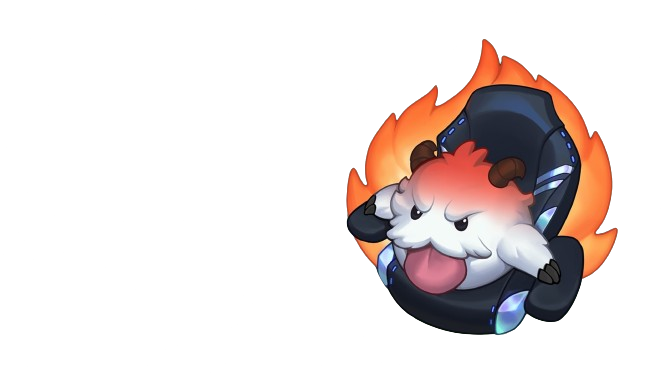
– Recognizing Tilt: Identifying signs of frustration or tilt during gameplay, such as impulsive decisions, negativity, or loss of focus, and taking steps to address them.
– Taking Breaks: Stepping away from the game when emotions run high, taking breaks between matches, or engaging in relaxation techniques helps in managing tilt and maintaining a clear mind.
8.3 Goal Setting and Focus
– Setting Clear Goals: Establishing achievable goals, whether they’re related to improving mechanics, climbing ranks, or mastering specific champions, provides direction and motivation.
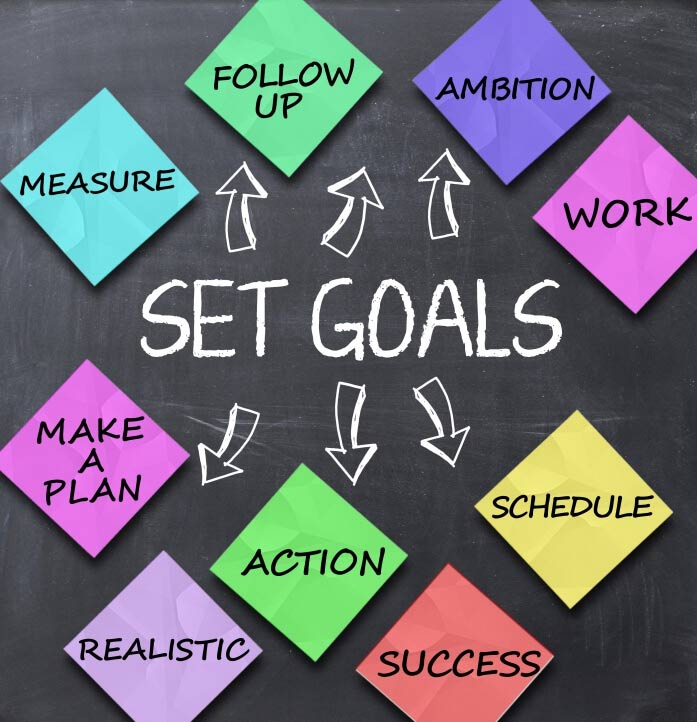
– Maintaining Focus: Concentrating on the present game rather than dwelling on past mistakes or worrying about future outcomes enhances focus and decision-making during matches.

8.4 Continuous Learning and Adaptation
– Openness to Learning: Embracing a growth mindset by being open to learning from mistakes, seeking guidance, and actively looking for opportunities to improve.
– Adapting to Changes: Being adaptable to meta shifts, game updates, or changes in strategies is crucial. Embrace changes as opportunities to explore new approaches and refine gameplay.
8.5 Mental Preparation for Performance
– Pre game Rituals: Establishing pre-game routines or rituals, such as warm-up matches, stretching, meditation, or listening to music, helps in mentally preparing for matches.
– Visualizing Success: Using visualization techniques to imagine successful plays, strategies, or outcomes before matches can positively impact in-game performance.
8.6 Seeking Support and Building a Community
– Support System: Having a supportive community or group of friends within the game helps in sharing experiences, discussing strategies, and providing emotional support during tough times.
– Engaging in Positive Communities: Being part of positive and constructive communities, forums, or groups fosters a healthier gaming environment and encourages mutual growth.
Maintaining a healthy mentality and mental preparation is crucial for consistent performance and overall enjoyment of League of Legends. Developing resilience, managing emotions, and fostering a positive mindset contribute significantly to becoming a better player.
Conclusion
League of Legends is more than just a game; it’s a dynamic and ever-evolving platform that challenges players to excel in various aspects, both individually and as a team. Here’s a summary of the crucial points discussed in this guide:
1. Diverse Roles and Strategies: Understanding the unique roles—top lane, mid lane, bot lane, jungle—and their intricacies helps in mastering different playstyles, champion types, and strategies.
2. Itemization and Adaptability: The art of itemization involves adapting builds based on matchups, team compositions, and game flow. Flexibility in item choices is crucial for optimizing champion performance.
3. Laning, Objectives, and Map Control: Mastering laning, wave management, and controlling objectives are pivotal for gaining advantages and controlling the map.
4. Teamfighting and Strategy: Teamfighting involves positioning, coordination, and understanding roles within the team, while strategies like split-pushing and grouping affect game outcomes.
5. Continuous Learning and Mental Attitude: Embracing a growth mindset, seeking continuous improvement, and maintaining a positive mental attitude are vital for personal and gameplay development.
6. Mentality and Mental Preparation: Managing tilt, setting clear goals, and mental preparation before games are essential for consistent performance and a healthier gaming experience.
7. Community and Support: Being part of a supportive community, seeking mentorship, and engaging positively contribute to a more enriching gaming environment.
In conclusion, improvement in League of Legends is a journey encompassing multiple facets—mechanical skill, game knowledge, strategy, and mental fortitude. By adopting a holistic approach, embracing a growth mindset, and continuously seeking self-improvement, players can evolve not only as skilled individuals but also as positive contributors to the vibrant League of Legends community. Striving for improvement isn’t just about becoming a better player; it’s about fostering a mindset of growth and enjoying the journey of learning and mastering the game.

